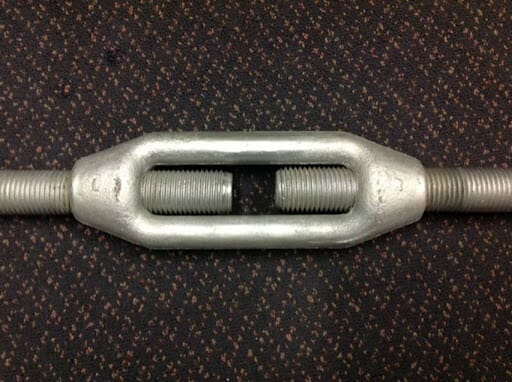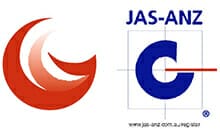Tension rods are an integral component in civil engineering and whether it’s building truss bridges, suspended buildings or anything in between, high-quality tension rods are critical to the proper functioning and safety of suspended structures.
When discussing the application and use-case of tension rods, it’s best to consider them in the context of the broader tension rod system. A correctly manufactured and robust, durable tension rod is designed with respect to the broader system and takes into account the bridge structure, the load-bearing requirements and the other elements of the tension rod system.
Here at GS Forgings, we offer customised solutions for companies looking to build structures that stand the test of time. Our forged tension rods are some of the highest quality available on the market, and we’re frequently the supplier of choice for classic bridge restoration all over Australia.
What are bridge tension rods?
Forged tension rods are long stainless steel or carbon steel rods that are stressed from tension or compression, or sometimes in combination, to support dynamic loads. With these rods, you can transfer large forces with a minimum quantity of material over large distances. Tension systems work with their tensile strength and must adhere to stringent quality control requirements to ensure the overall structure’s strength.
Components of tension rod systems:
Tension rod systems comprise tension rods, anchors, fork connectors, and anchor discs. The main load-bearing component in this system is the tension rod. Critical to building bridges, tension rods bear load in a unique way, allowing constructions that span a great distance without vertical supports. As such, they need to be made from the highest quality steel with stringent attention to detail.
Tension rod:
Tension rods are long steel components with a left-hand and a right-hand thread to engage with the left and right forks. You can torque the rod for engagement and adjust the length of its flattened section with the help of a wrench.
Couplers:
Couplers join tension rods to create larger structures for longer bridges. You can also adjust the length of the tension rod system with the use of a coupler. A coupler has two locking nuts.
Anchor discs:
The span of your system can be extended with anchor discs. In the case of cross bracing, you can use this as a central connection point. A single anchor disc can connect up to eight bars.
Clevis Ends:
Clevis ends, also known as fork connectors, are the connection point between the tension rod and the anchor plate. Here at GS Forgings, all our clevis ends are drop forged for strength. They’re a critical part of the overall structure’s strength, and must be as well-made as possible.
Connection plates:
The pivotal connection point in a tension rod application, connection plates are the physical anchoring point between the structure and rod system. Designed as fins to be welded to steel structures, or with T-plates for through-bolting to concrete structures.
Importance of tension rods in a structure:
Different projects demand specific requirements for tension rods and fork connectors. When selecting a tension rod, you must do so with project-specific information and specifications.
The most important properties to consider when ordering tension rods are toughness, ductility and strength. The strength in the tension rods is for obvious reasons. If tension rods and connectors are ductile, they will effectively redistribute the stress concentrations according to your requirements. A tough product will limit fractures and crack propagation, ensuring both longevity and safety.
Most tension rod failures occurring due to manufacturing short cuts, or attempted cost cutting of the construction firm resulting in less than ideal quality, or disproportional load capacity. The correctly manufactured tension rod system will have components that are designed as part of a greater whole, and to equally exact specifications far in excess of failure points. In cold climates, weaknesses and inconsistencies are magnified and as such, it’s even more important to ensure that high-level manufacturing with tight tolerances is undertaken, to ensure the safety of the overall structure.
Ensured quality with GS Forgings.
Our tension rods are manufactured to meet or exceed all relevant Australian standards. We use state of the art forging technology and equipment to ensure our products are
Customised tension rods that match your project
Here at GS Forgings, we offer custom forged tension rods of the highest quality and durability. We’ve been in the business for over 85 years and when it comes to building bridges and suspending structures, we know a thing or two about meeting customers’ needs.
No matter the scope of your project or how tight your tolerances are, we stand ready to produce high-capacity systems that satisfy both industrial and individual needs.
Your design, our highest standards.
Tension rods and their connectors demand a high level of attention to detail and adherence to strict safety standards. At GS Forgings, we forge tailored solutions and components using the toughest materials and in-house technology to meet the highest safety standards. With competitive prices and extensive industry experience, you can make the next step with GS Forgings backing your design and structure.
If you’re after a reliable tensioning system to fit a unique application, get in touch with our specialist team here at GS Forgings. Call us on +61 3 8301 1500 and speak with one of our specialists. You can also fill up the contact us form on our website or write to us via email.
Read about: Custom Metal Fabrication and Forging Heat Treatment






